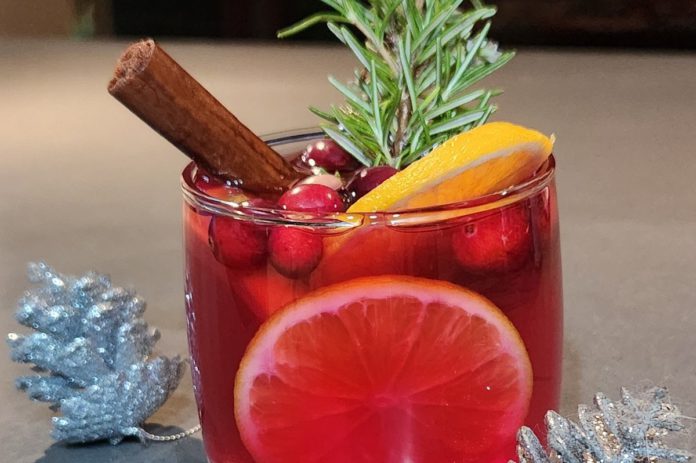In the Bible, the first miracle Jesus performs is turning water to wine at a wedding—at the behest of his mother Mary no less. Although Jesus initially balks at the request, all involved agree that the festivities would be in danger if the booze ran out. This familiar religious story underlines the connection between alcohol and human social ties.
Felipe Bolivar Rincon, M.D., an addiction medicine specialist and primary care provider with Kaiser Permanente, explains that ever since humans tried fermented fruit and learned how it could lower inhibitions, alcohol has played an important cultural role. “We have a sense that this will heighten the experiences of our social gatherings…It opens up more conversations and some of us will find more enjoyment, maybe enjoy a little bit more the music and the food. It also will decrease that feeling of satiety so we want more and more.”
We need strong ties with fellow humans to survive and thrive; alcohol can encourage even the naturally shy to get out and party and have more positive experiences with others. However, alcohol comes with great harm that can destroy the benefits it brings in moderation.
The National Institute of Alcohol Abuse and Alcoholism (NIAAA) defines a standard drink as 14 grams of alcohol. The physical amount varies greatly depending on the concentration in a particular alcoholic drink. For women and the elderly, an unhealthy level of drinking is any more than three drinks in one sitting or more than seven in a week. For men, it’s more than four in a sitting and 14 in a week. However, for many this limit may be lower.
People tend to underestimate the risks of alcohol, and 5 to 10% of the population suffers from alcohol-use disorder. Alcohol can lead to a long list of health issues, including insomnia, anxiety, and depression, liver damage, high blood pressure, heart problems, memory loss, impaired cognitive function and cancer. Alcohol is the fourth most common preventable cause of death in the U.S., and it’s associated with about a third of violent deaths, motor vehicle accidents, suicide and homicide.
The scale of the risks can come as a surprise when alcohol is framed as a harmless and even healthy lifestyle choice. Bolivar Rincon says, “A lot of my patients say, ‘But Doc, didn’t we used to say that a glass of wine per day was healthy?’” However: “Whatever low-dose protective mechanism alcohol can have on the heart, it’s completely offset by its harm in other systems.” People can start drinking to deal with insomnia, stress or anxiety, but alcohol itself exacerbates those symptoms, so people drink even more and end up in a destructive cycle.
Over the holidays, conscientious hosts can find themselves in the dilemma of the Biblical Mary—how to throw a celebration without wine’s help. Bolivar Rincon advises hosts to make alcohol “pull” rather than “push.” Let guests ask for alcohol rather than offering it proactively, and certainly respect a no.
“We’re in a very pushy culture,” Bolivar Rincon says. “‘Oh, just have one. Enjoy it with all of us. Have a toast.’ No. Let’s refrain from doing that.” Conversely, present nonalcoholic options with flair. “The alternatives [should be] centralized and visible and hopefully very attractive. Because you’re competing against alcohol. Ideally it should be sparkling water with flavors, mocktails, beautifully [displayed].”
Hosts can also plan games that break the ice and encourage socializing, getting everyone’s energy up and lowering inhibitions without the help of alcohol—no drinking games. Ideally, gatherings can strengthen bonds among friends and family, preventing people from becoming isolated and drinking alone, but without leading guests into heavy social drinking.
Similarly, guests should attend with a plan in mind and stick to it. Bolivar Rincon says, “Know what triggers you. Know at what limit you go overboard. Know what happens when you feel very happy, or very depressed or very anxious, what’s going to happen to your levels of alcohol. And be comfortable with saying no.” People can give reasons for abstaining such as “I’m trying to be healthier,” or “I want to get up early tomorrow,” but even “I’m not drinking tonight,” should be enough. Ultimately it’s no one else’s business.
Those with substance-abuse disorders can take medications prescribed by a physician to decrease cravings before social events. These won’t cause an extreme reaction like throwing up, but they decrease the attraction and reward of drinking. “In our field we’re very aware that this can be a tough season,” says Bolivar Rincon.
While Jesus transformed water to wine, and even used wine as the symbol for his blood, he also compared himself to light, bread, a vine, a shepherd and water, and each has a different significance. Wine is only one part of the human experience, and humans can flourish without it. Even around Jesus’ official birthday.
Kaiser has resources for substance abuse disorder treatments.
healthy.kaiserpermanente.org/northern-california/health-wellness/addiction-and-recovery/drug-and-alcohol-treatment
Alameda County also has a helpline for substance use treatment and referral: 1-844-682-7215
www.acbhcs.org/substance-use-treatment/





Amazing inputs Dr. Rincon. I enjoyed the thoughts you shared about Alcohol.